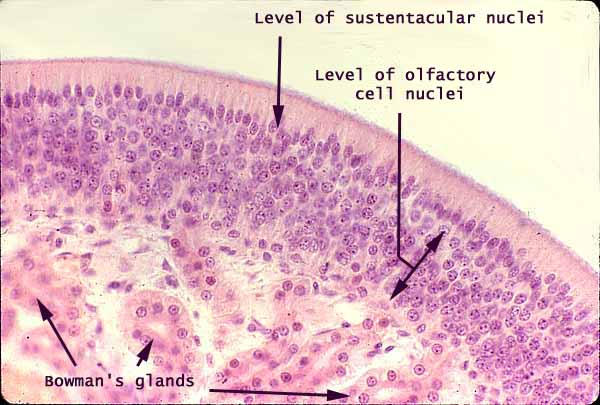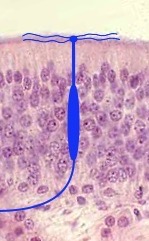


Olfactory epithelium


Olfactory epithelium cannot be properly appreciated in routine histological preparations. Even so, this pseudostratified, columnar epithelium differs noticeably from the ordinary respiratory epithelium which lines most of the airways.

Olfactory epithelium is thicker, with many more nuclei, than ordinary respiratory epithelium. The only "proper" epithelial cells here are those with oval nuclei which form the upper, outermost nuclear layer of this epithelium. Most of these are characterized as "sustentacular" (sustaining or support) cells. Most nuclei within the olfactory epithelium -- all those round nuclei which lie deep to the outermost nuclear layer -- belong to olfactory cells. These olfactory cells share attributes of both epithelial cells (e.g., cilia at their apical ends) and nerve cells whose axons extend from here through the cribriform plate into the olfactory lobe of the brain.
A cartoon of the shape of an olfactory cell is drawn in blue in the smaller image above. This shape, with its bizarre apical knob (olfactory vesicle) sprouting numerous, non-motile ciliary tentacles, is not apparent in routine micrographs, nor are the axons which proceed from each olfactory cell to the olfactory bulb.
Mucus-secreting Bowman's glands are named after William Bowman (b. 1816, the same Bowman who gives his name to Bowman's capsules in the kidney).
Comments and questions: dgking@siu.edu
SIUC / School
of Medicine / Anatomy / David
King
https://histology.siu.edu/crr/CR004b.htm
Last updated: 10 August 2022 / dgk